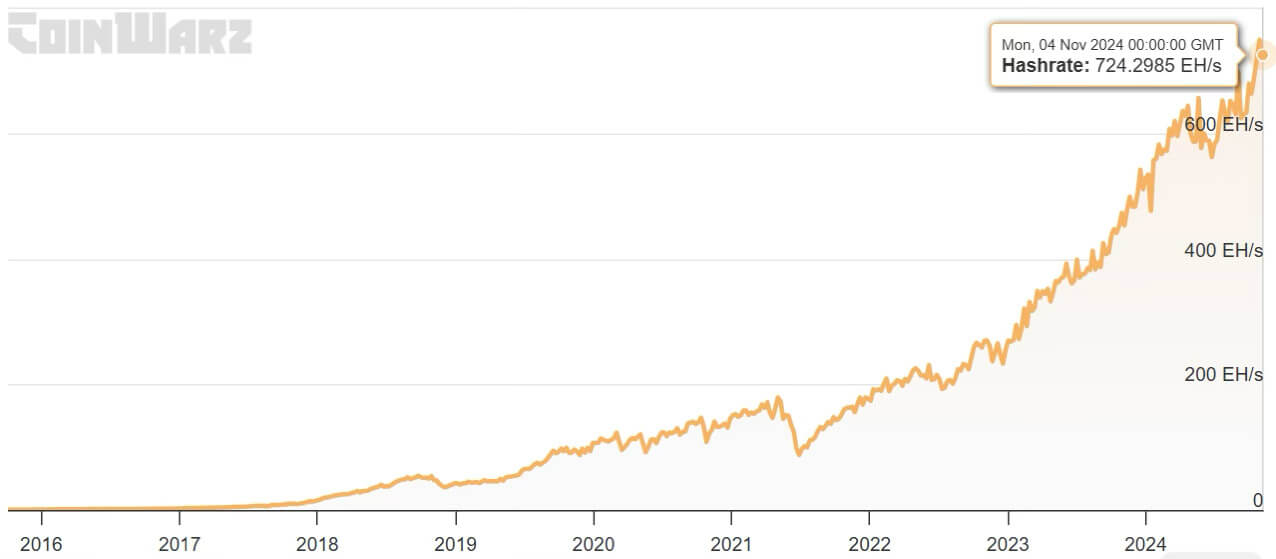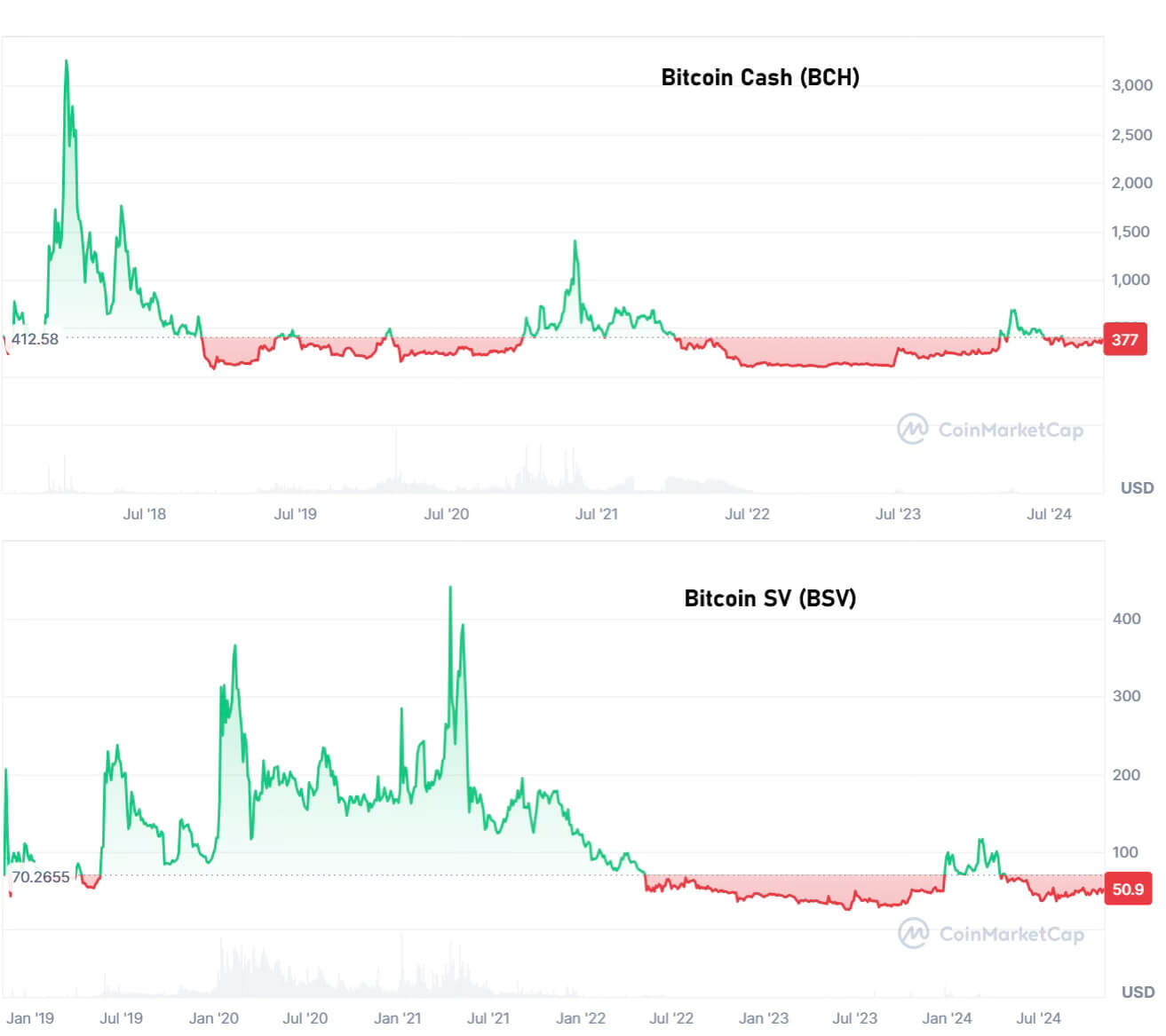The next is a visitor publish by Shane Neagle, editor-in-chief of The Tokenist.
Bitcoin has pushed the envelope of economic innovation in some ways. As a distributed digital ledger, it opened up the house for transparency and provided a viable different to banking. Based mostly on its proof-of-work algorithm, Bitcoin has created a digital shortage. Digital however nonetheless embedded within the bodily world of {hardware} property and power necessities.
All this whereas utilizing open supply. And Bitcoin's open-source nature has spawned greater than 100 exhausting forks. These are ledgers that comply with completely different units of guidelines, a lot in order that they’re incompatible with earlier blocks, leading to a brand new model of the blockchain.
When a brand new exhausting fork is created, pushed by completely different visions of P2P cash and incentives, a brand new model of Bitcoin is born. By market capitalization, the biggest are Bitcoin Money (BCH), Bitcoin SV (BSV), Bitcoin XT (BTCXT), and Bitcoin Gold (BTG). Whereas none of them even come near Bitcoin's (BTC) huge market cap of $1.47 trillion, they’ve contributed many concepts which can be related to the way forward for Bitcoin.
What are bitcoin forks about?
From the very starting of the Bitcoin mainnet launch in January 2009, with the primary genesis block mined, it was clear that adjustments would have to be made to ensure that Bitcoins to be created Peer-to-Peer digital money register system as Satoshi Nakamoto initially supposed.
For this imaginative and prescient to work in a world of near-instant on-line funds, the Bitcoin community must function on par with the Visa or Mastercard networks. The issue is that these networks depend on centralized databases (ledgers) similar to VisaNet, which focus totally on the effectivity of transaction processing.
In spite of everything, as an middleman of cash between banks, Visa, in distinction to Bitcoin's imaginative and prescient, doesn’t cope with any monetary sovereignty.
However how would this be attainable with a decentralized pc community? To maintain it that method, each transaction have to be verified by different nodes to achieve consensus on proofs of labor. Bitcoin's present efficiency is round 7 transactions per second, as every block loaded with transactions takes 10 minutes to verify (3,347 transactions per block presently).
This strategy to ledger administration has a number of implications:
- Bitcoin transaction charges enhance as transactions enhance. Bitcoin miners trigger this friction as a result of they’ll set a brand new precedence degree of charges obtainable bitcoin mempool housebecause the demand for the bitcoin mining community will increase.
- If Bitcoin's recognition drives up transaction charges, it makes Bitcoin a poor substitute for “every day cash,” which ideally ought to have minimal friction to be adopted on a mass scale.
- If the plain answer of accelerating the transaction block measurement is applied, the Bitcoin community would grow to be extra centralized as extra computing and storage can be required to course of transactions.
In different phrases, Bitcoin exhausting forks had been primarily involved with balancing block sizes. For instance, when Mike Hearn launched Bitcoin XT as a fork of Bitcoin Core in August 2015, this model of Bitcoin was supposed to extend the block measurement from 1MB to ultimately 8MB, which may additional double each two years.
If we take a look at different Bitcoin exhausting forks, we see an identical sample of failures.
How are fastened forks made?
Bitcoin exhausting forks are created by introducing new Bitcoin Enchancment Proposals (BIPs). Together with bug fixes, they’re the start line for brand new options. Nonetheless, these new options are solely applied when the activation threshold is reached, which is ~95% miner help.
In truth, the final 2,016 blocks (about two weeks of mining) must sign their help for the introduction of the brand new BIP.
When Mike Hearn and Gavin Anderson offered theirs BIP 101 proposal to extend the utmost block measurement from 1 MB to eight MB, did not move the activation threshold. This induced some controversy when Hearn claimed that “Bitcoin failed”, however solely his BIP 101 failed. The ensuing exhausting fork, Bitcoin XT, is a canceled model.
Such forks result in new cash, not like tokens – the latter of which are sometimes created on pre-existing blockchains. However, it was Bitcoin Basic (BXC) that subsequently emerged from Bitcoin XT because the block measurement was reverted from XT's 8MB to 2MB. Once more, this exhibits that Bitcoin exhausting forks exhibit block measurement rebalancing.
Bitcoin Money (BCH) additionally emerged from these “block wars” in August 2017, ultimately growing the block measurement to 32MB. Of all of the exhausting forks, BCH stays probably the most profitable, presently with a market cap of $7.26 billion.
Even such reasonably profitable splits have their pitfalls. Australian businessman Craig Wright launched a BCH fork known as Bitcoin Satoshi Imaginative and prescient (BSV) a yr later, in November 2018. Claiming to be the particular person behind the pseudonym Satoshi Nakamoto, he was later uncovered as a fraudster within the UK Excessive Court docket utilizing in depth counterfeiting and authorized ways in opposition to critics.
Cast within the crucible of adversity
Provided that Gavin Anderson was as soon as a key member of Bitcoin Core, the first framework for Bitcoin, it's honest to say that even BIP's failed exhausting fork contributions serve a goal.
Though the Block Dimension Wars ended on the aspect of the “small blockers”, the contentious debate led to the implementation of Segregated Witness (SegWit) as a smooth fork, which was activated at block 477,120 in August 2017.
By BIP 91, 141, and 148, SegWit streamlined Bitcoin transactions by separating witness metadata from the primary transaction. This successfully elevated the block measurement by introducing a block weight, permitting 4x extra transactions per block.

Most significantly, SegWit paved the best way for Bitcoin's personal scaling answer on the second layer, the Lightning Community, because it enabled Schnorr signatures. These not solely permit having atomic multi-way funds (AMP) for LN, which splits massive funds into small chunks, however minimizes the on-chain information footprint resulting from a extra environment friendly and smaller signature.
AMP additionally permits customers to optimize cost routing by means of LN channels, because the payer solely must know the payee's public key. In the end, what began as a sequence of Bitcoin exhausting forks, most of which did not acquire traction, enabled one other sort of Bitcoin scaling.
The frictionless scaling that LN permits, mixed with good contracts, may even result in futures contracts not directly, as a result of they’d require such velocity and deeper liquidity. Even the Federal Reserve Financial institution of Cleveland has acknowledged that the Lightning Community brings Bitcoin nearer to “on a regular basis cash.” paper with the identify Lightning Community: Turning Bitcoin into Cash.
“Our findings recommend that the Lightning Community's off-chain netting advantages may also help Bitcoin scale and performance higher as a method of cost. The centralization of the Lightning Community doesn’t look like way more environment friendly, though it could enhance the share of low-fee transactions.”
Within the discipline of funds, it could be possible that specialised exhausting forks may discover their place. On-line is all the time wanted bill factoring or acquiring a small and medium-sized enterprise (SMB) enterprise mortgage.
However the truth that Bitcoin caught with a conservative block measurement whereas including LN as a scaling answer isn't that shocking on reflection.
Community safety dangers and vulnerabilities
Within the early phases of Bitcoin's improvement and adoption, as a serious forex innovation, it was important to take care of a conservative strategy. If bitcoin is to be perceived by the general public as sound cash, it must retain its basic traits, no pun supposed.
By diluting the facility of the hash fee, exhausting forks naturally current a safety vulnerability. The basic worth of Bitcoin comes from the hash fee energy of the mining community. It’s the quantity of computation required for a mining rig to resolve cryptographic puzzles and add a legitimate transaction block in alternate for BTC as a block reward.
Throughout this mining competitors, these with a better hashrate have a greater likelihood to earn BTC. And as extra computing energy is added to the community, the problem of the Bitcoin community robotically adjusts each 2,016 blocks, or about two weeks.
Conversely, a lower in hash fee efficiency would enhance the chance of a 51% community assault attempt to succeed. A brand new hardfork wouldn’t solely drain computing energy, however this divergence and dilution would create an elevated state of threat through the deployment of the brand new model.
Which means that Bitcoin miners are biased in the direction of securing the community from innovation.
In spite of everything, even when there’s a single printed case of a profitable hack of the Bitcoin community, it will function a devaluing power in perpetuity. And if that occurs, any innovation would fade into the background. Accordingly, the Bitcoin hashrate has just one trajectory – up.


At this level, the computing energy of the Bitcoin mainnet is so ample that even a pointy drop within the worth of BTC wouldn’t represent a vulnerability. In such a state of affairs, it’s attainable that some mining operations may depart the community resulting from losses, which results in a lower within the issue of mining.
However due to the earlier conservative strategy and bias in the direction of safety, the Bitcoin community would have stopped it.
Market volatility and investor sentiment
Seven years in the past, the aforementioned Bitcoin Money (BCH) had an all-time excessive worth of $4,355, as probably the most profitable exhausting fork launch. After launching in August 2017, it peaked on the finish of this yr. Following the destiny of many altcoins together with Bitcoin SV, the sample is well-known:
- Preliminary speculative help.
- Extra distant, nonetheless lower cost peaks from earlier ones.


Notably, through the interval of the Federal Reserve's +$6 trillion enhance within the M2 cash provide in 2020 and 2021, together with stimulus controls, each exhausting forks mirrored this enhance. However after the liquidity faucet was turned off with the beginning of the March 2022 fee hike cycle, BSV and BCH returned to excessive threat territory.
This is sensible contemplating the next elements:
- General, there's solely a lot capital you may go round.
- There’s even much less capital within the cryptosphere.
- As a digital financial novelty, cryptocurrencies are perceived as riskier than shares.
Consequently, the recipient of a lot of the capital would go to the unique and most safe cryptocurrency – Bitcoin.
Conclusion
As this valuation mannequin turns into extra obvious, this can be very unlikely that future Bitcoin exhausting forks or current ones will acquire traction over Bitcoin. Within the eyes of buyers, altcoins are positioned alongside shares, that are primarily based on corporations with exhausting property and earnings.
The unique Bitcoin is an exception right here, exactly due to its huge pc community that brings exhausting property into play. Whereas exhausting forks have tried the identical, they pale as compared, placing them on par with generic proof-of-stake altcoins.
Inside this ecosystem, heavyweights like ethereum have grow to be the main focus of capital. At greatest, Bitcoin exhausting forks may get a momentary worth increase resulting from their decrease market caps in comparison with Bitcoin. This has speculative revenue potential, however so does the altcoin ecosystem as an entire.
